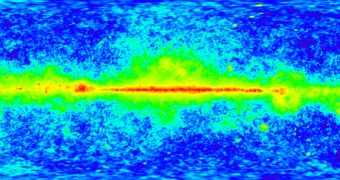University of Oxford theoretical physicist Roger Penrose is convinced that our Universe is not the first of its kind. His newest theory argues that a number of eons occurred before this one, and that the Big Band that spawned our Cosmos is just the latest in a string of many. But how can we test this?
What the expert is proposing is that the Universe continually cycles through these eons. When a new one begins – with a Big Bang – it develops and expands like we notice our Cosmos doing right now.
When it reaches the end of its cycle, the entire Universe collapses to produce another Big Bang, starting the cycle anew. Penrose does not believe that the time and the dimensions of space were produced only 13.75 billion years ago.
His theory is based on data collected by the NASA Wilkinson Microwave Anisotropy Probe (WMAP) satellite, a spacecraft that uncovered unexpected phenomena taking place in the cosmic microwave background (CMB).
According to Penrose, these data support the theory of conformal cyclic cosmology that he created. The issue with it is that the data runs directly opposite to the inflationary model of the Big Bang, to universal expansion, to dark matter and dark energy, and so on.
Under the inflationary model, the end result of dark energy-driven expansion will be a cold, uniform, featureless Universe. But the Oxford physicist does not believe that this model can account for they way everything was produced, and developed afterwards.
As per Physics World, Penrose believes that the inflationary model “cannot account for the very low entropy state in which the universe was believed to have been born – an extremely high degree of order that made complex matter possible.”
The model the scientist proposes an elegant explanation for the low entropy. As the Universe expands to become infinitely large, black holes accumulate more and more matter and information, until finally they evaporate, trillions of years into the future.
At that point, the Universe will be ready for another Big Bang, but will have very low entropy, since most of it would have already been eliminated by the black holes. Penrose claims to have proof of the existence of other Big Bangs.
He says that CMB data reveal concentric circles, where temperatures are lower than in their surroundings. Under the inflationary model, such features should not exist, as the CMB should be smooth, Daily Galaxy reports.

 14 DAY TRIAL //
14 DAY TRIAL //